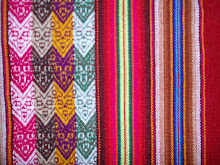齋木さん and his wife both practiced and were amazing 書道 artists. They welcomed me, with my limited linguistic abilities, from day one, but were able to see from the first day my honest intentions and genuine interest in and respect for the art form, and thus made an effort to teach me weekly everything from how to properly rub my own 炭 sumi ink to tips on how not to let me legs go びりびりbiribiri fall asleep while sitting 正座 seiza on my knees for an hour at a time.

My teacher would instruct me on the patience and the theory behind each stroke. I quickly learned that my traditional ideals of Western beauty does not translate into that which is considered beautiful or elegant in Japanese culture; indeed, each stroke had a reason, a thought, a specific maneuver and even a bodily position one had to learn in order to correctly create the stroke. As I learned, my submitted works would be published in the regional (tri-prefectural) magazine. I was much better at my 太字futoji wide brush block 漢字 kanji strokes than I was at my 細字 hosoji thin-brushed calligraphy that would often express 俳句 haiku or a proverb. I had both types successfully published, but my 太字 like the one above, became much more recognized, even in my workplace.
As I continued my practice in my third year and my calligraphy would consistently be awarded promotions to the next level, my group and I became increasingly intimate and would actively meet outside of class to relate on other levels, away from the quiet, disciplined atmosphere of the 書道 classroom. We would meet at sushi bars and even went out to カラオケkaraoke a few times together. 齋木さん was a member of an amateur radio club, as was my hairdresser, and I would be invited out to group picnics and fun parties with that great group of people. 齋木さん's daughter was my age and we got along very well once ice was broken regarding my ability to maneuver the language (I believe the Japanese, much like so many of us, have a true fear of not being understood...the "what happens if I don't understand her? or if she doesn't understand me?" complex that, once overcome, can really open doors).
Anyway...
Toward the end of my stay, my 書道 group organized a farewell party for me. Unbeknownst to me, my teacher had been in communication with the regional master, he who judged all the works, decided those worthy of publication and who would eventually be promoted to the next level of mastery, and they had spoken in great depth about me and my progress over my three year 書道 study. My formal Japanese had quite a workout that night as the Master chose to attend the farewell dinner for me, but his purpose for being there, besides meeting me, was to bestow upon me a true honor: the title of "teaching master" for the Japanese art of 書道 calligraphy.
I still open up my brushes, smooth out my 和紙 washi rice paper, place my inkstone to my right and my paperweight atop my 和紙, placed over a piece of black felt to ensure a smooth gliding surface for my brush and go through the ritual of rubbing my 炭 sumi stick for ink to practice my characters. A great sense of peace washes over me when I can allow myself to be lost in the great focus required for the correct formation of the characters I choose to write, and I must force my Western brain not to fall back into my Western-defined sense of elegant script but to instead recall the discipline required to correctly form characters that, when placed together on a piece of 和紙 have profound and often divine meaning.

How beautiful you make it all sound. I have often wanted to have my name, my children's and grandchildren's names written in Japanese brush strokes and then frame them for I find the characters beautiful even though I cannot read them. You are so fortunate to have all this knowledge. Are you passing this along to your children also? Pleasant dreams tonight.
ResponderEliminarToo awesome Mapiprincesa. I don't know much about the Japanese way of life but I seem to remember that they have a lot more poise and grace than we do. Especially in their traditions.
ResponderEliminarVal, maybe you should send me a private email with your names and I can get something done for you... man, what a pleasure that would be.
ResponderEliminarZ...Poise and grace is an interesting point. There is a lot of superficiality and a lot of extreme repression, which I'll talk about later. Things are always so different than they might appear...
Everything is different than it appears isn't it?
ResponderEliminarI think I could understand the extreme repression and the superficiality. I wonder though, if maybe tradition has something to do with rememberance? You can honor the past, remember mistakes, triumphs and keep a certain amount of morals and ethics with tradition.
My thought may come off as elementary to you, it is a new concept in my mind. Or maybe I've just never really thought about why we put our hand on our heart during the pledge......
Interesting.